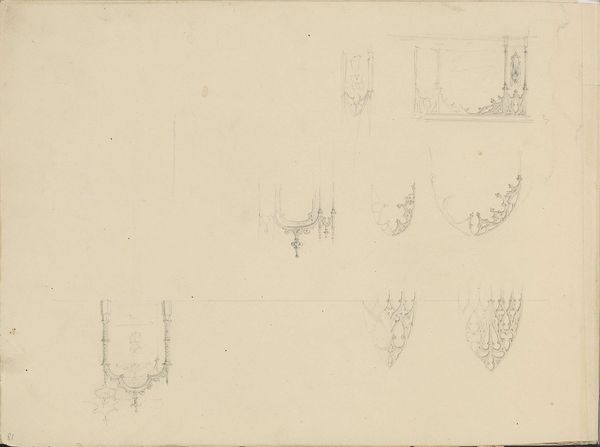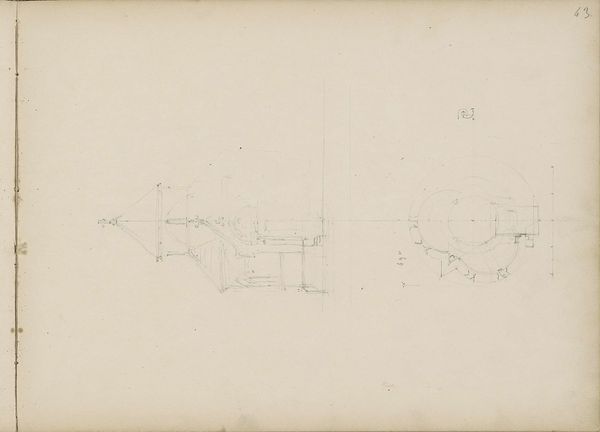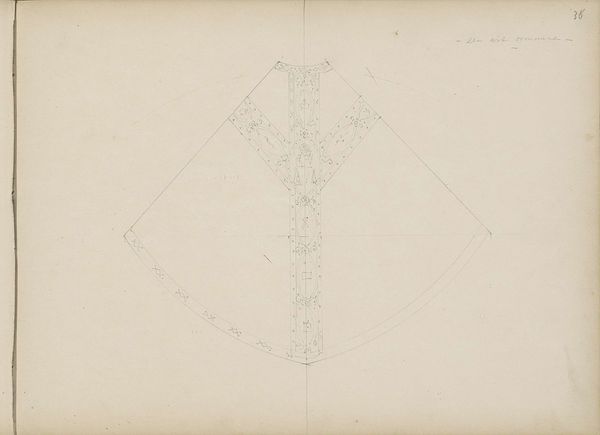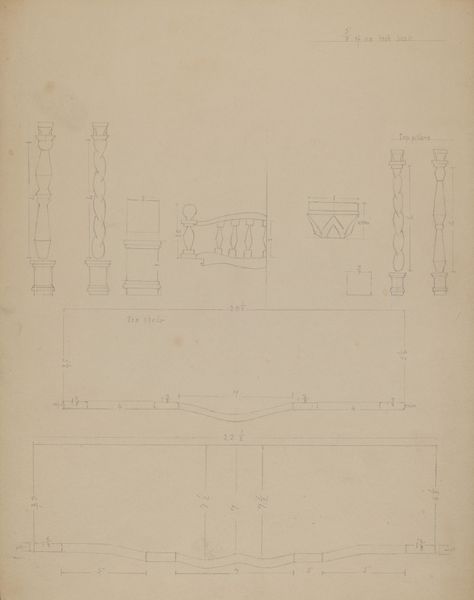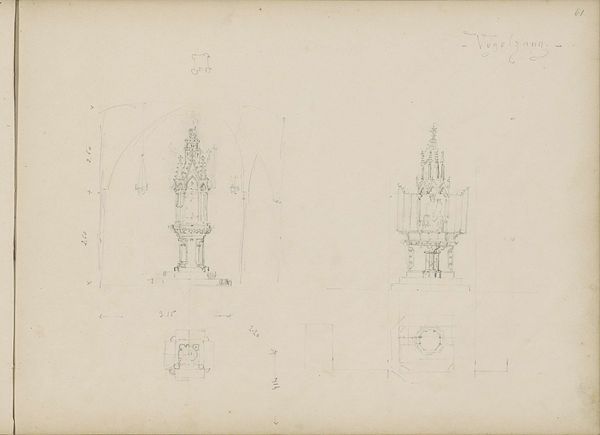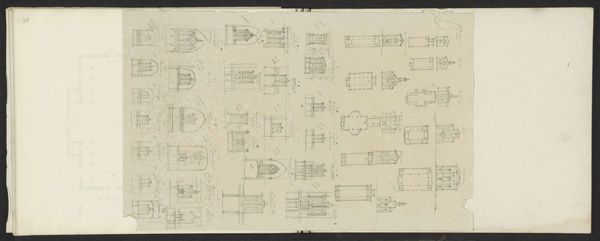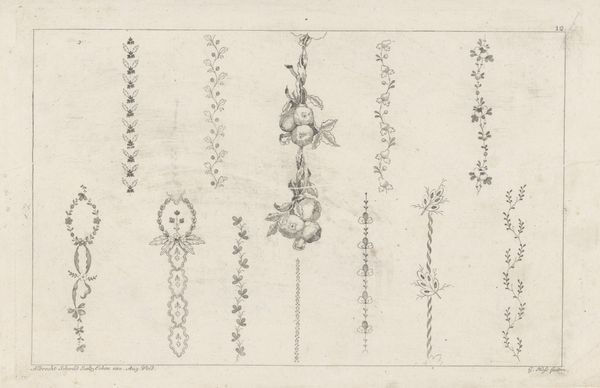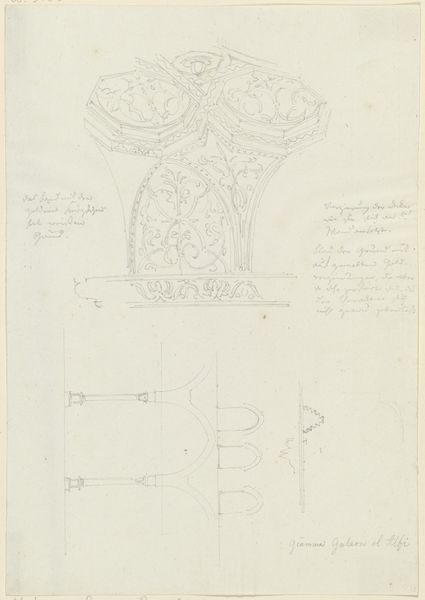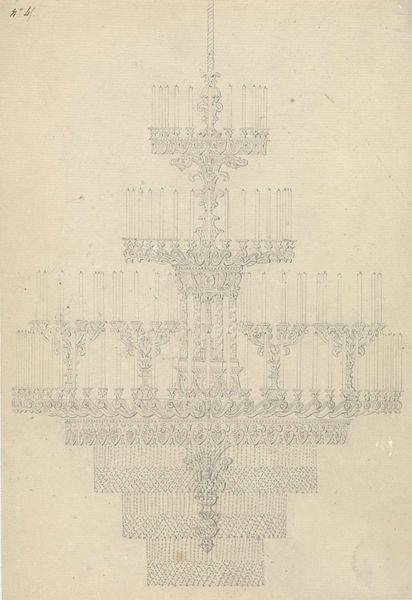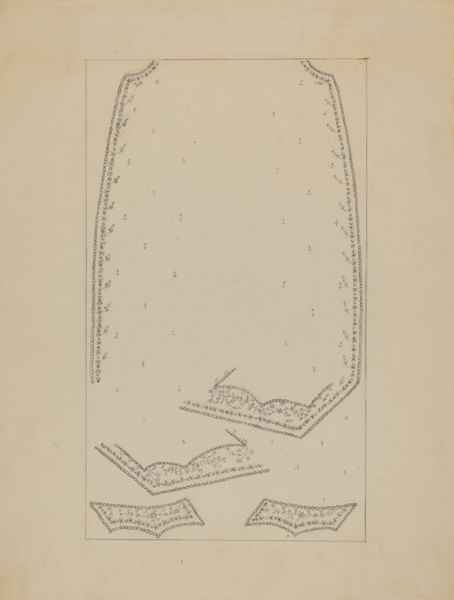
Plattegronden van de kathedralen van Metz, Rouen, Orléans en Amiens c. 1850
0:00
0:00
pierrejosephhubertcuypers
Rijksmuseum
drawing, print, paper, pencil, architecture
#
drawing
#
aged paper
#
toned paper
#
hand written
#
medieval
# print
#
hand drawn type
#
paper
#
personal sketchbook
#
hand-written
#
hand-drawn typeface
#
fading type
#
geometric
#
pencil
#
sketchbook drawing
#
sketchbook art
#
architecture
Copyright: Rijks Museum: Open Domain
Editor: This is a drawing by Pierre Joseph Hubert Cuypers, circa 1850, titled "Floor Plans of the Cathedrals of Metz, Rouen, Orléans, and Amiens". It's a pencil print on paper and has a distinctly architectural feel, a kind of archaeological mood to it. What jumps out at you when you see this piece? Curator: What strikes me is its function as a historical document and reflection of 19th-century revivalism. Cuypers was a key figure in the Gothic Revival movement in the Netherlands, and his interest in these French cathedrals reveals a broader European trend. These plans weren't just architectural exercises; they were acts of cultural appropriation. How were these images deployed to support and validate national and religious identities at the time, do you think? Editor: That’s fascinating, I hadn't thought of it as appropriation. I suppose copying and disseminating them could elevate Dutch identity. It feels like a direct connection to the grandeur of the past, even French past, while also laying the groundwork for the revival movement. Curator: Precisely. The "accuracy" of these plans, which may be debated, held immense power. The printing press helped normalize a shared "truth" and contributed to shaping how society perceived the Church in its idealized state. By carefully selecting and representing these architectural examples, Cuypers indirectly suggested that the architecture of the past holds particular virtues applicable in his present day, like religious symbolism. Editor: It’s amazing how a seemingly straightforward drawing of architectural plans can be seen through the lens of politics and cultural influence. Now I see it’s not just a floor plan but part of a cultural narrative. Curator: Indeed. This artwork reminds us that the artistic representations of structures reflect and actively participate in societal ideologies. It challenges us to look beyond the facade. Editor: I’ve learned so much, thank you! I never thought of architectural sketches as potential conveyors of cultural messaging! Curator: My pleasure. Keep looking, and keep questioning!
Comments
No comments
Be the first to comment and join the conversation on the ultimate creative platform.
